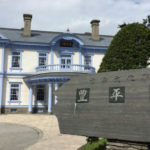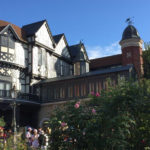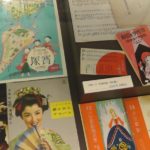目次
”北海道開拓の村”道の真ん中を線路が通ってる。
8月の下旬に札幌にある”北海道開拓の村”にいってみた。名前の通り 野外博物館です。
建物がいくつある念って感じで立ち並んでます。道の真ん中には線路があって 電車が走るような感じにはなってますが、本当は
実は馬車が走ってます。
こなれした感じで 女子の車掌さんと馬を走らせる男の方が 行ったり来たりで、いくらか忘れましたが、結構、リーズナブルな値段で乗せて走ってくれます。
職種別の建物が立ち並んでます。
この通りの建物が またいっぱい建ちならんでて 歩いて一軒一軒見ていきます。
当日は平日で非常にすいていましたし、天気も良く
■北海道開拓の村
住所:北海道札幌市厚別区厚別町小野幌50-1
電話:011-898-2692
AM9:00~PM5:00 一般800円
北海道開拓の村は、明治から昭和初期にかけて建築された北海道各地の建造物を54.2haの敷地に移築復元・再現した野外博物館。
1983年4月に開村。市街地群・農村群・漁村群・山村群に分かれ、北海道の開拓にあたった人たちの知恵と努力を見ることができます。
住所:北海道札幌市厚別区厚別町小野幌50-1
電話:011-898-2692
AM9:00~PM5:00 一般800円

■いきなり豪華な建物です。現物っぽい!
札幌停車場 出入り口です。

■この村の管理事務所みたいな。
中で結構くつろげます。

■武井商店

■本庄鉄工所

■ミマス河本そば屋

■山本理髪店
この店の人形さんがしゃべります。
景気どやねんって感じです。面白い。

■浦河支庁庁舎

■小川家酪農畜舎

■近藤医院
中に入るとおもしろい。

■開拓使札幌本庁舎

■旅館 待合所
I went to “Hokkaido Pioneering Village”. There are plenty of places to see here as well.
“Hokkaido Pioneering Village” The railroad runs through the middle of the road.
In late August, I went to the “Hokkaido Pioneering Village” in Sapporo. As the name suggests, it is an open-air museum.
I feel like there are many buildings standing side by side. There is a railroad track in the middle of the road, and it looks like a train is running, but it is actually a horse running. A horse pulls a carriage and runs from station to station with tourists.
The carriage is actually running.
The female conductor and the man who runs the horse go back and forth, and I forget how much, but they ride for a reasonable price.
Buildings are lined up by occupation.
There are many more buildings on this street, so I’ll walk around and look at them one by one. A barber shop, a newspaper company, a post office, a shipping wholesaler, and a station waiting room. In addition to the town, farms and forestry have been recreated.
It was a weekday, so it was pretty empty, and the weather was nice.
■Hokkaido Pioneering Village
Address: 50-1 Onoporo, Atsubetsu-cho, Atsubetsu-ku, Sapporo-shi, Hokkaido
Phone: 011-898-2692
9:00 AM to 5:00 PM General 800 yen
Hokkaido Kaitaku no Mura is an open-air museum that relocates and restores buildings built in various parts of Hokkaido from the Meiji era to the early Showa era on a site of 54.2 ha.
Opened in April 1983. Divided into urban areas, rural areas, fishing villages, and mountain villages, you can see the wisdom and efforts of those who pioneered Hokkaido.





